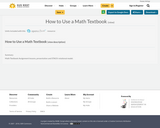
Math Textbook Assignment lessons, presentation and STACK rotational model.
- Subject:
- Math
- Material Type:
- Lesson
- Teaching/Learning Strategy
- Date Added:
- 10/22/2018

Math Textbook Assignment lessons, presentation and STACK rotational model.

Scientists require interaction and teamwork to do their jobs, so it’s important to build that kind of culture with every student in the science classroom. This can be done by:
1. Creating a safe, equitable space.
2. Connecting to humans in the real world.
3. Integrating other disciplines.
4. Supporting the development of interpersonal skills.
In this article, you will find access to "Science Connections: The Podcast" as well as an infographic that will help to inspire the next generation of scientific innovators.

In the media and in the classroom, much emphasis has been placed on India's stunning economic growth since the 1990s. Less attention has been paid, however, to the consequences of the country's rapid industrialization on the nation's people and natural environment. Like many other developing societies throughout history, India's economic progress has resulted in environmental degradation, natural resource depletion, and increased consumption and waste, thereby threatening people's health, access to resources, and traditional ways of life. Using case studies on pollution in the Ganges River, coal mining in Jharkhand, and data comparing the country's total and per capita energy consumption, this cluster explores, and places within a global context, the pressing environmental and human challenges brought by India's industrialization.

Have you ever wondered what it would be like to live in an igloo?It would be pretty cold compared to the houses we live in now. Could you imagine living with over forty other people in one big house? Living with that many people would be like sharing a house with your whole class and all the teachers in your school!
The environment that we live in affects everything that we do. Canada is a country with a lot of different environments. There are parts of Canada where the temperature is freezing and all you can see is snow for most of the year. There are places where it rains a lot of the time and places where it is very dry. There are places that have mountains and some that are flat. There are rivers, lakes and oceans. Canada has a very diverse landscape.
In the past, First Nations were the only people living in Canada.They are the First Nations because they were the first occupants of North America. In Canada, each First Nation had to adapt to their environment in different ways. The houses they built, the food they ate, and the activities they did were all greatly affected by the environment they lived in.
Here you can look at three different aboriginal cultures from three different parts of Canada: the Huron, the Haida, and the Inuit. You can compare them to see how different their ways of life were because of where they lived.
Teaching resources available.

An excellent collection of FNME Resources from Alberta Education.
This includes:
*Online print resources
*Curriculum resources
*Professional learning resources
*First steps for professional development
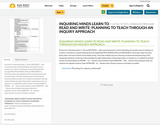
Process For Teaching Inquiry 1. Set up MOTIVATE – with essential question and frontloading, personally connect students to content 2. Standards or goals Meeting them through MULTIPLE MODALITIES and MEASURES to Articulate major learning goals, both conceptual (what) and strategic (how). o Provide multiple ways for learning and demonstrating learning of the standards/end goals/ enduring understandings through independent culminating projects 3. Sequence or scaffold for gradual release of responsibility by MODEL – for – Teacher does/students watch MENTOR – with – Teacher does/students help and students do together/teacher helps MONITOR – by – Student does/Teacher assesses and helps as needed

Teachers skilled in classroom management are able to respond appropriately to just about any behavior that a student brings through the classroom door. While having a toolkit of specific behavioral strategies is important, the real secret of educators who maintain smoothly running classrooms with minimal behavioral disruptions is that they are able to view problem student behaviors through the lens of these seven 'big ideas' in behavior management.

Various Reading Intervention Strategies
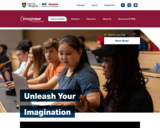
Created by the University of Regina Hill and Levene Schools of Business, the Imagineur program is made up of 8 online modules designed for high school and university students who are interested in becoming entrepreneurs. There is also an educator's kit that can be downloaded for each module.

This video shows the K-2 Skills block in action in Brenna Schneider and Katie Benton's Kindergarten and Second Grade classrooms at Lead Academy in Greenville, South Carolina. It shows how the teachers prepare, assess and group students, select and manage materials, and foster students' self-management and smooth transitions during differentiated small group time. The video addresses common questions and challenges teachers face when implementing this component of the EL Education Language Arts curriculum at grades K-2, in particular how to make most strategic use of the differentiated small group time.
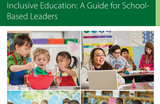
Responsive Instruction Modules: Classroom Level Support
Module 1: School-wide Planning - Making Supports and Services a Priority
Module 2: Reading Instruction - Critical Elements
Module 3: Instruction in Mathematics - Effective Instructional Practices
Module 4: Written Expression - Effective Instructional Practices
Inclusive Education Modules
Module 1: School-wide Planning - Making Supports and Services a Priority
Module 2: Fostering Inclusion - Understanding the Classroom Teacher's Role
Module 3: Instructional Support - Engaging Students and Classroom Teachers
Responsive Instruction Modules: Targeted/Group Approaches
Module 1: Targeting Reading Instruction - Knowing Our Learners
Module 2: Targeting Mathematics Instruction - Knowing Our Learners
Module 3: Targeting Written Expression Instruction
Supporting Students with Intensive Needs in the Classroom
Intellectual Disability
Physical Health Impairment
Bipolar Depressive, Anxiety or Related Disorders
Substance Related or Addictive Disorders
Autism Spectrum Disorder
Deaf or Hard of Hearing
Orthopaedic Disabilities
Neurodevelopmental Disorder Associated with Prenatal Substance Exposure
Blind or Visually Impaired

Oral history techniques for use with students at all levels, from kindergarten through high school.
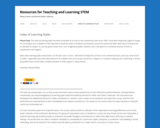
This is an online inventory based on the work of Richard M. Felder and Linda K. Silverman. The quiz will determine preferences on four dimensions (active/reflective, sensing/intuitive, visual/verbal, and sequential/global).
This site includes the inventory, explanations of each of the areas, FAQs, applications of the learning styles, interesting articles including one on "Understanding Student Differences", and the validity of learning styles is explored.
**Make sure you open the 4 page "Learning Styles and Strategies" link after you take the inventory. This includes insightful information on how you can use the results to help yourself!**

Bright, beautiful, interactive and simple to use, Managing your money offers a series of seven worksheets to help Indigenous individuals and families to set and work towards money goals. Each financial topic and activity features artwork by Simon Brascoupé paired with a teaching from the animal world that draws on their skills, strengths and experiences in managing resources. These worksheets are designed to facilitate one-on-one conversations or to be used in financial education workshops (and in fillable pdf format) They can be used in the order they appear, or in a different order that fits best with the individual. This resource also includes recorded webinar, with faciliator guide, blank slides to make your own presenation, and full booklets in English, French, Cree and Ojibwe.

This site includes the following: (plus other information pertaining to Aboriginal Education in Manitoba and Canada)
It's Our Time: First Nations Education Tool Kit Teacher's Guide (National and Manitoba)
Creating Racism-Free Schools through Critical/Courageous Conversations on Race
Critical/Courageous Conversations on Race: What your child is learning at school and how you can help
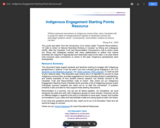
This document helps support students and teachers wishing to engage with Indigenous perspectives in science. It also covers why it is important to connect to local Indigenous communities, provides suggestions on how to develop student understanding, and shares examples of how student science research can directly connect to the
Canadian Truth and Reconciliation Calls to Action.
Also check out the Indigenous Engagement Starting Points Checklist which provides a list of Indigenous groups and/or individuals you/your students can reach out to, to start this connection. A question checklist is also provided to help support those starting discussions.

In honour of Truth and Reconciliation Week, the Canadian Olympic School Program is proud to feature the stories of two distinct Indigenous Team Canada athletes, Jesse Cockney and Jillian Weir. Through their personal growth and achievements, they have brought Indigenous voices to the forefront.
Students will explore the themes of gratitude and inclusion, making links between their world, curriculum and stories.
Athlete Stories are available in two different reading levels, Kindergarten – Grade 3 and Grade 4- 6. Each story is accompanied by discussion questions and learning activities that teachers can easily integrate into their curriculum.

At Indspire we are committed to supporting communities and educators in helping students become the leaders of tomorrow. Indspire’s Guide for Educators of Indigenous Students is designed for educators of Indigenous students. The 2nd edition of Indspire’s Guide for Educators of Indigenous Students was created using valuable educator feedback gathered through conversations and surveys. Within these pages, you’ll learn about professional development programs and events, resources to support educators in the classroom, career planning events for educators and students, and much more.
Visit the website to download the guide.

Graphic organizers and worksheets that help K-12 students with their inferencing skills. Inferencing is an important for understanding text as often times authors imply themes and ideas.
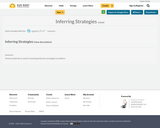
Various materials to assist in teaching inference strategies to children.